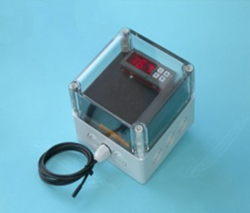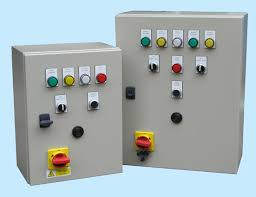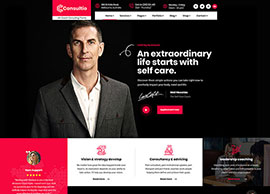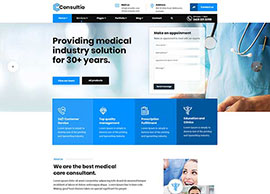
Self-Regulating cable
These are one of the most common types of heating cables available on the market today. The general construction is that there are two bus-wires (Live and Neutral) carrying the supply voltage.
A conductive matrix is extruded over the bus-wires. This is actually the heating element and not an insulating layer.
To provide electrical insulation, a layer of thermoplastic is then extruded over the matrix and conductors.
As an option, a further layer of metallic braiding is normally applied to the cable. This layer provides both mechanical protection and also an earth path for earth leakage detection. As a final option, a layer of thermoplastic or fluoropolymer is extruded over the final cable. This final layer provides UV and further mechanical protection. In some industries, the fluoropolymer layer is preferred because of its resistance to acids and chemicals (e.g. oil refineries).
If the temperature drops, the heating cable will start increasing its output again. This is the main principle of self-regulating heaters.
Typically self-regulating cables come in various output ranges, and a maximum temperature that they can withstand. For example the graph above, the maximum operating range is up to 65°C.
The great advantage of self-regulating cables is that they can be cut anywhere along its length. This allows long reels to be provided to site and the cable can be pulled from the reel and installed very quickly without knowing the exact length of the equipment to be heated.

Constant Wattage cable
At pre-determined distances, the insulation is removed from alternate conductors, exposing the base conductor. A heating wire (or element) is wrapped around the two conductors, and where the wire meets these two areas, a heating ‘zone’ is created.
Sometimes the heating element is strengthened with fiberglass thread to absorb the high stresses created (especially at higher voltages) in the relatively thin heating wire.
A layer of insulation is then extruded over the cable. Similar to the self-regulating cable, a further optional layer of metallic braid and a final thermoplastic or fluoropolymer insulation can be extruded over the cable to provide a finished product.
The heating cables in this range of heating cables are considered power-limiting as the alloys used in the heating element have a relatively high Temperature coefficient of resistance (also known as the alpha-coefficient). What this means in laymen’s terms, is that when the element temperature increases, its resistance also increases.
This effect is much less than in self-regulating cables discussed earlier allowing for lower start-up currents and slightly longer circuit lengths.
The disadvantage of this type of cable is the zoned construction. If the installer isn’t careful (or not aware) of ‘notch’ locations, then there is a high likelihood that a cold section of cable will be installed without realising.
Also, high voltage cables (~500VAC or higher) create very, very high tension in the heating element and joints, and failures are common-place due to the element simply snapping or tearing away from the notch. These problems are not common in modern cables at lower voltages.

Series Wire
These cables are either provided as a flexible, cut-to-length version, or as a mineral insulated type cable. The whole design of the cable relies on insulated conductors which are wired in series (for single phase supplies) or connected in a star connection at the remote end (for three phase supplies).
The cables can be in a variation of a single conductor per cable, two conductors, or three conductors per cable. The cables can be used in various formations to produce a valid heating circuit.
For example, two single conductor cables can be used connected in series or a single cable with two conductors can do the same application, with the physical conductors joined in series at the remote end.
The largest advantage of series cables is the long distances that can be heated in a single circuit.
Flexible series cables can be cut-to-length on site and installed reasonably easily. The design must be strictly monitored to prevent over or under heating.
Mineral insulated cables can maintain very high temperatures, but have to be carefully measured and manufactured off-site due to their construction

Skin Effect Systems
Skin effect heating system can provide a cost-effective alternative to Series resistance heat tracing on long pipelines. A pipeline up to 25 kilometres plus long can be traced from a single power point.
To operate the system requiems a ferro magnetic tube attached to the surface to be heated with the conductor wire pulled into its completed length. The skin effect heating system generates heat in the “Heat Tube” by the return electrical current flowing through the impedance of the inner skin of the heat tube.
Maximum Maintenance Temperature: 200°C

Temperature Controls
Temperature controls are provided to:
· Ensure Temperature Softy
· Ensure Process temperatures
There are three types of control systems that we can use;
1) No control. The heater is constantly energised and the final application temperature will be a function of the heater output, insulation and local ambient conditions
2) Ambient control. The heating system is controlled by the ambient temperature. This is typical for Fast protection systems where no critical temperature limits are imposed.
3) Surface Control. The heating is directly controlled as a function of the work piece temperature.
When temperature controllers are used they should be rated for the requirements of the installed area.
- DT – Weatherproof Range – temperature range to 150C

Control & Distribution Panels
HTuk provide custom design and supply of complete industrial / commercial control and distribution boards. These boards are designed to incorporate and protect our complete range of electric heaters, sensors and controllers;
Htuk brings its thermal expertise to numerous applications, including industrial processing, oil and gas, energy processes, diesel, foodservice equipment, life sciences and others.








































